In Issue #113 of Singletrack Magazine, we tested 17 different pedals as part of our Flat Pedal Group Test
As part of that group test, we rated all 17 pedals according to several key performance characteristics including grip, platform shape, durability, and ease of service. At the end of the test period, we then presented four separate awards; Best Engineered, Best Grip, Best Budget, and Best Overall.

Winner Of Best Engineered: Hope F20 Flat Pedals
First introduced in 2012, Hope’s F20 flat pedals have been relatively unchanged in the past five years, with just a tweak to the pin shape changing the tips from slightly rounded, to a much sharper, pointier, hollow design.
At 15mm these are among of the thinnest pedals we have on test, but the bodies are good wedges of aluminium with no horizontal cutouts, keeping them suitably tough while the weight sits below 400g. The cutouts shed mud well without compromising durability; after some horrible rock strikes, a bit of anodising is missing around the edges but nothing is really dented or bent.
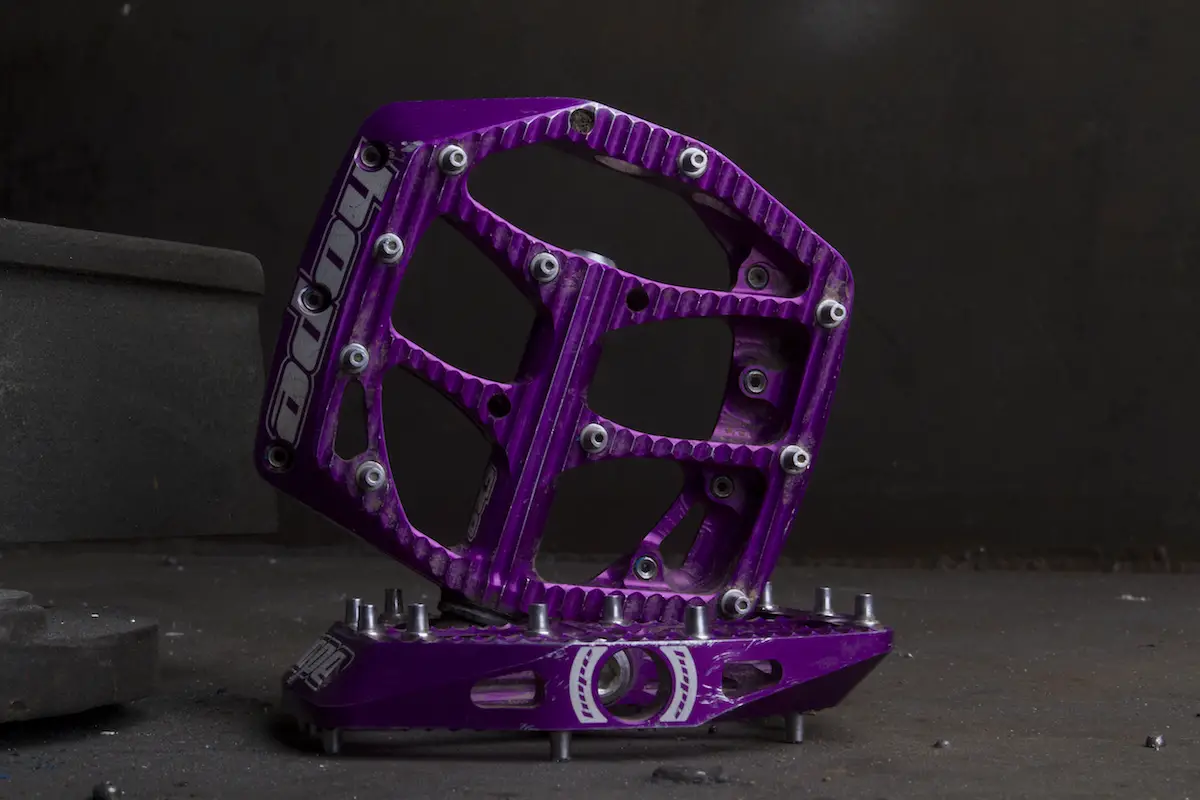
As you’d expect on a mid- to high-end pedal body, sloped leading edges make rock strikes more survivable, and coupled with a slightly rounded off overall shape, they leave no corners sticking out from under your shoes.
Latest Singletrack Merch
Buying and wearing our sustainable merch is another great way to support Singletrack
They come in black, purple, blue, silver, red, or orange (Hope has previously done editions in pink and green, but neither is currently available). It’s what inside that counts though, and in this case that’s a Cr-Mo axle, three cartridge bearings plus a sealed end cap on the outboard end, and a Norglide bushing with a couple of extra seals on the inboard side. The cartridge bearings are small 685 ones, but having three packed in together should keep them running as long as possible under the stressful weight of humanity.
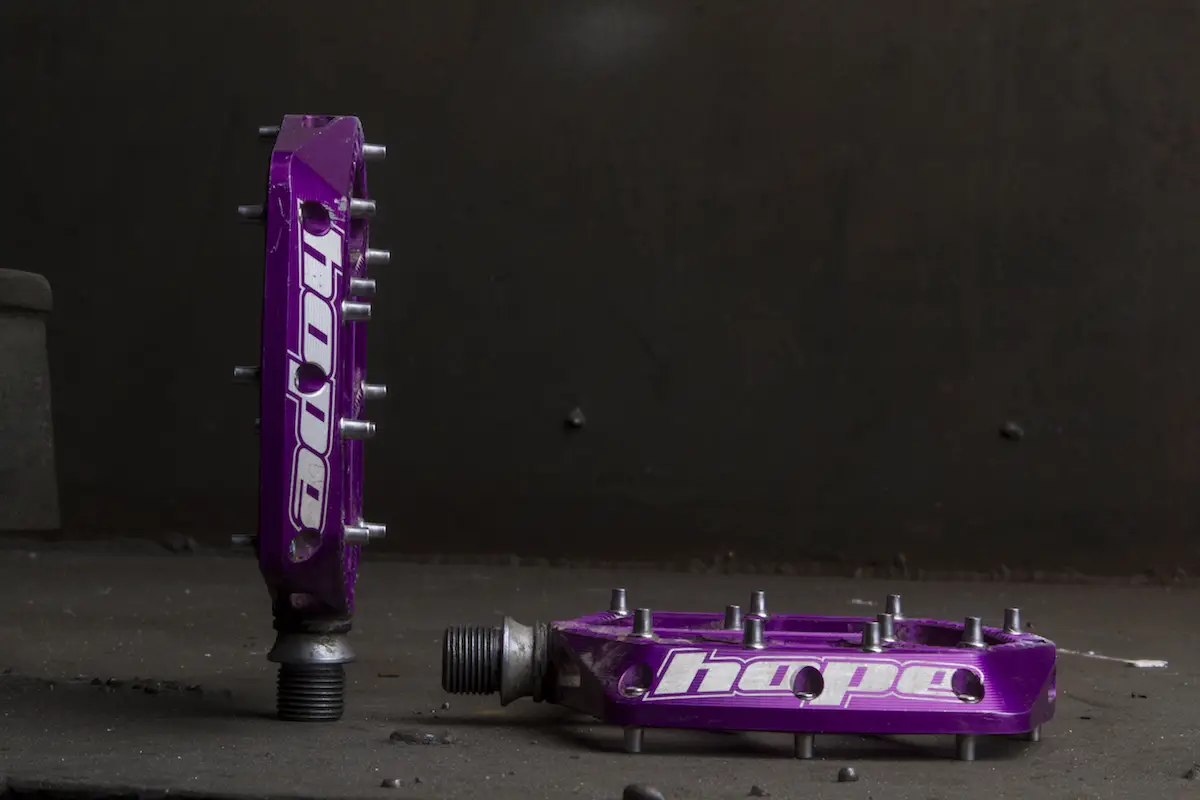
Because the design is based around a three-quarter length rather than full-length axle, the locknut holding it all together is quite far from the end of the pedal body. To fully dismantle and service them you’ll need a long, thin-walled socket, but as you’d expect from Hope, it sells a suitable tool for the job. Before you need to do that though, you can simply remove the end cap and refill with grease around the cartridge bearings.
Hope says the pedal bodies are slightly concave, though that’s slightly indeed: compared to most pedals with a bowl shape in the middle, the concavity wasn’t apparent to me from holding them. In use they certainly feel very flat, though are not lacking in grip. Out of curiosity I tried taking the centre pins out to create more of a bowl for my feet to sink into, but to my slight surprise, on back-to-back wet laps of Llandegla to compare, found grip much better with the centre pins still in, possibly because more pins were digging into my shoes and resisting any forces trying to push them around. This may vary depending on your shoes.
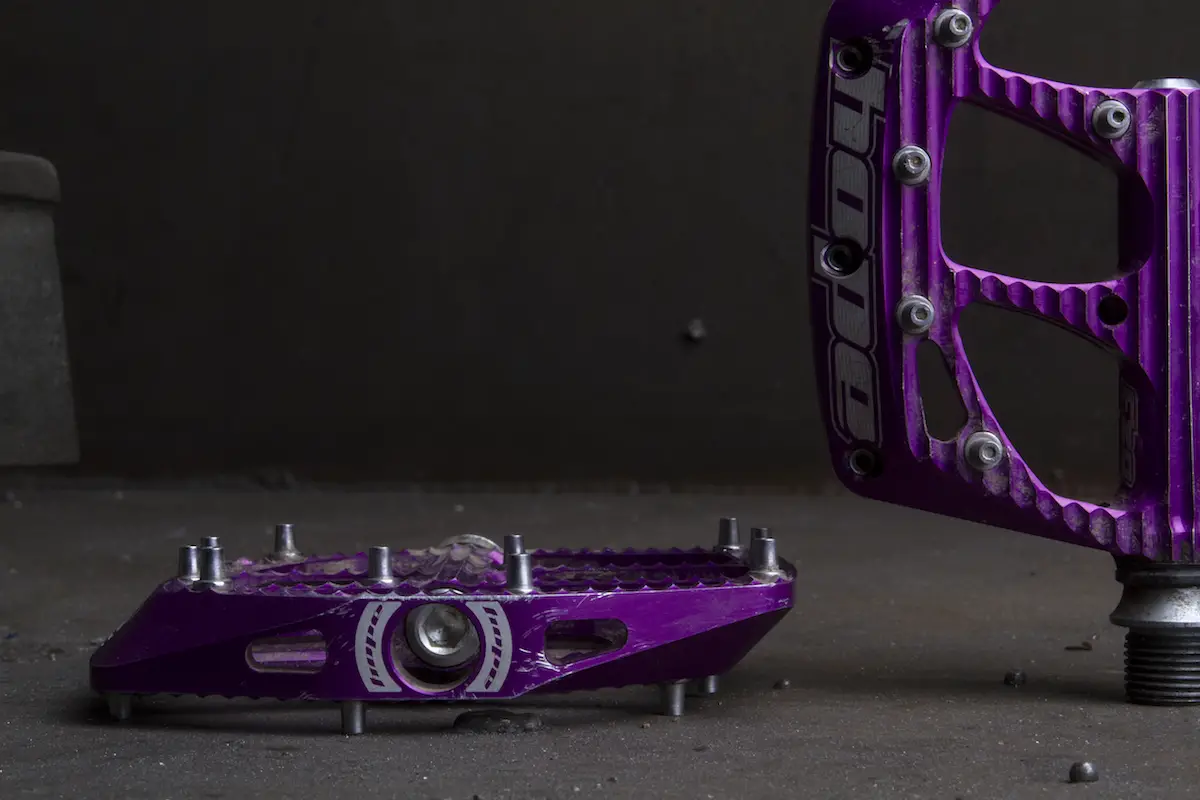
I rode them on an assortment of hardtails and full suspension bikes, in all weathers, on a variety of routes from trail centres to moors and natural rocky descents, and they were decent grippy pedals for all of it. With the sloppy technique of tired limbs, the flatness of the top surface occasionally led to my feet slipping a bit on technical climbs, but, apart from that, they didn’t stutter at all.
Where the F20s really excel is the pins. Many pedals use generic pins or screws, typically hi-tensile M4 grub screws or socket caps, but not Hope. It has designed its own bespoke pins, which have M5 thread, plus a bit of extra meat around the base to toughen them up and seat them solidly against the pedal body. They’re inserted or removed with an Allen key in the back of the pin, and they’re much beefier than those on any other pedal I’ve ridden. Once they were in, none came loose, none bent, and none got ripped out.
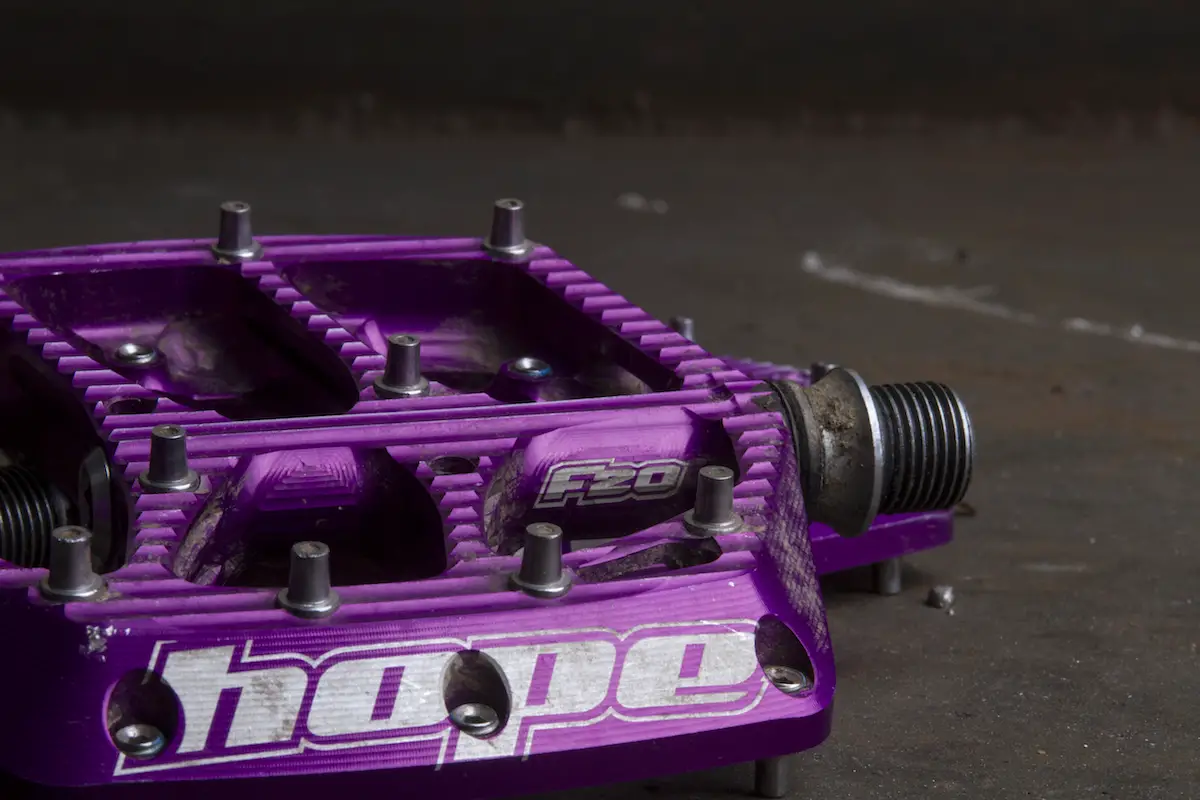
Up top, they’re conical, flat-topped hollow spikes that really bite right into the soles of your shoes. As one friend who tried them out observed, give them a minute for your shoes to bed in and they become difficult to move your foot around on. Each pin has a hole drilled in the centre, but it’s small and there’s enough metal left there to keep them tough. If you really want to make a pair of these lighter (and lighten your wallet too), Hope also sells optional titanium pins.
The F20s are also quite forgiving and still retain grip if you fail to keep your heels down; on a quick sprint to the Singletrack office I was surprised at how far forward I could get my weight without losing grip.

Overall
The F20s aren’t the absolute grippiest pedals on test, but they’re certainly a contender. Durable, and among the finest flat pedals I’ve ridden, if you need something tough, long-lasting and well made, the F20s could cover your needs.
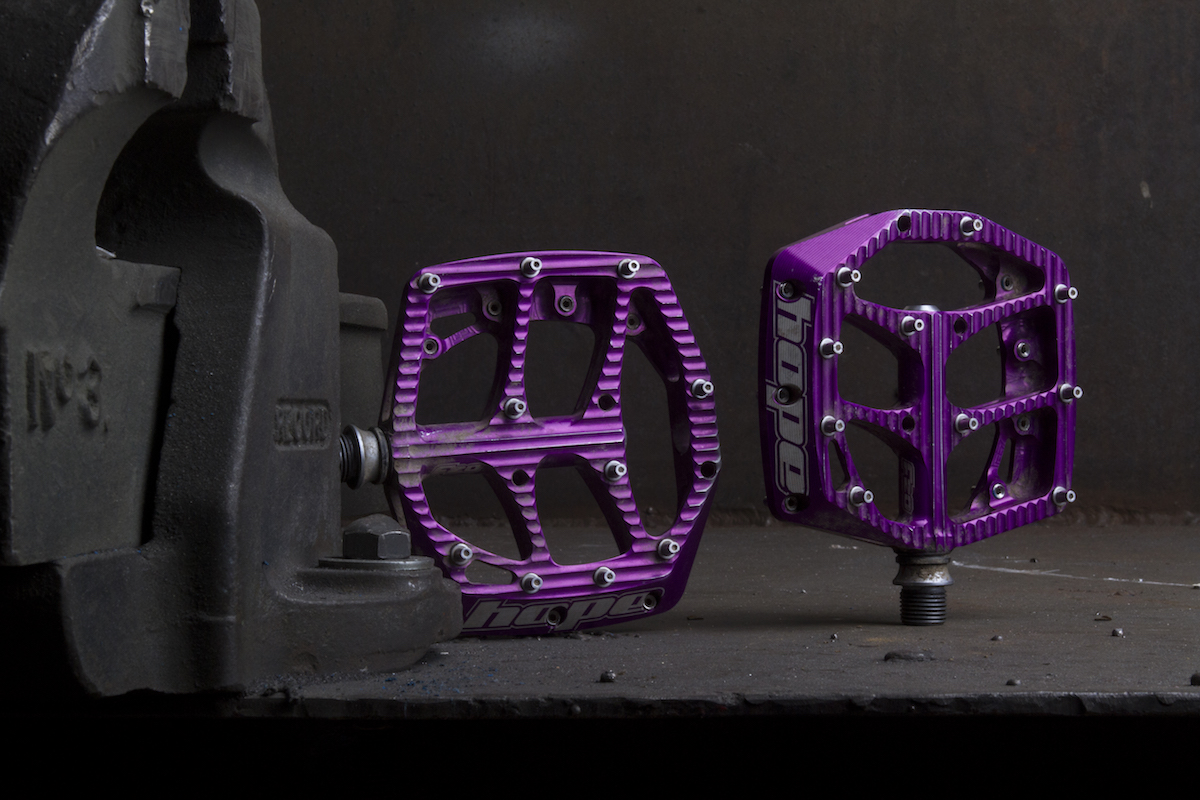




possibly the only positive thing ive ever read about them…
i hated mine until i replaced the original pins, but then i got some vaults for another bike and they are a different class
Overpriced tat.
I really like the f20s. Only pedal that has lasted more than a few weeks before getting spinny through Scottish winter.
Grip is fantastic, if you remove the centre pins – and use the newly provided as standard hollow pins. The grip with the previous pins was rubbish.
As I type this I have 5,117 miles on my F20s and they still spin like new with zero side-to-side play and I’m 210lbs and have never done anything to them other than install ’em…… Only pedal I’ll ever buy again, when and if I ever need new ones.